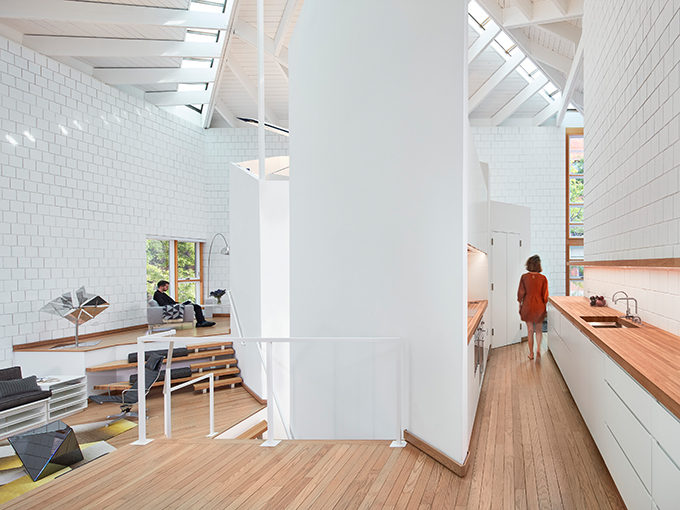
In the 1960s, architect Walter Netsch, a design partner at Chicago’s Skidmore, Owings & Merrill (SOM), pioneered a design system known as field theory. The method, born from the architect’s work on the U.S. Air Force Academy Cadet Chapel (1963), employs both large and small scales of a geometric figure, often a rotated square, to develop a structure’s plan.
. . .
When [the new owners] Forrest and Smithe moved into the home, they took time to live in the space and evaluate what changes they might want to make. After nine months, they decided to focus on interior updates to refresh a few spaces, with virtually nothing to be done to the architecture.
The couple approached SOM. “The rough idea of going to SOM was, having seen some of the buildings that Netsch had designed, they were very intricate and theory-based designs,” Forrest says. “We weren’t sure that a regular architecture firm would understand field theory… they may not have been as sensitive to why things were the way they were and how to implement any changes that were necessary to deal with the fact that the house was 40 years old.”